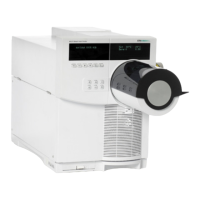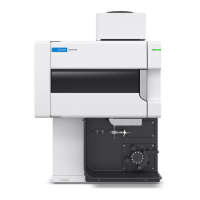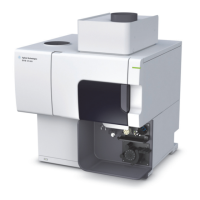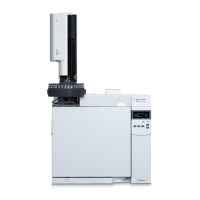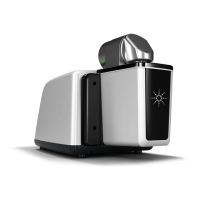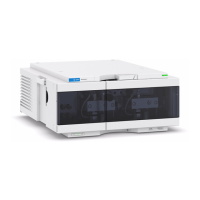178 5975 Series MSD Operation Manual for MassHunter
A Chemical Ionization Theory
Positive CI Theory
Positive CI (PCI) occurs with the same analyzer voltage polarities as EI. For
PCI, the reagent gas is ionized by collision with emitted electrons. The reagent
gas ions react chemically with sample molecules (as proton donors) to form
sample ions. PCI ion formation is more “gentle” than electron ionization,
producing less fragmentation. This reaction usually yields high abundance of
the molecular ion and is therefore often used for determining molecular
weights of samples.
The most common reagent gas is methane. Methane PCI produces ions with
almost any sample molecule. Other reagent gases, such as isobutane or
ammonia, are more selective and cause even less fragmentation. Because of
the high background from the reagent gas ions, PCI is not especially sensitive
and detection limits are generally high.
There are four fundamental ionization processes that take place during
positive chemical ionization at ion source pressures in the 0.8 to 2.0 Torr
range. These are:
• Proton transfer
• Hydride abstraction
• Addition
• Charge exchange
Depending on the reagent gas used, one or more of these four processes can be
used to explain the ionization products observed in the resulting mass spectra.
EI, methane PCI, and ammonia PCI spectra of methyl stearate are shown in
Figure 36. The simple fragmentation pattern, large abundance of the [MH]
+
ion, and the presence of the two adduct ions are characteristic of positive
chemical ionization using methane as a reagent gas.
The presence of air or water in the system, especially in the presence of
PFDTD calibrant, quickly contaminates the ion source.
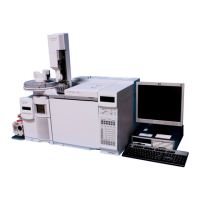
